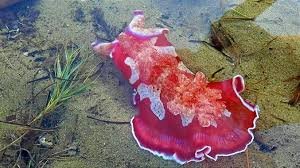Posts Tagged ‘China Miélville’
Writing Dynamic Non-Humanoid Aliens, Part 3 of 4
Today, I look at China Miéville’s, EMBASSYTOWN. Beware of spoilers. This won’t be a review of the novel, but a study of the Ariekei, the aliens indigenous to the planet Arieka.
First, a little advice…If you have the opportunity, consume EMBASSYTOWN via audiobook. To buy EMBASSYTOWN via Audible, click here. To buy the physical novel, EMBASSYTOWN click here. Language is central to the story, but the Ariekei language is best experienced when heard rather than read, therefore my encouragement to read via Audible. The Ariekei (also known as the hosts) speak from two mouths at once. One mind, but two words emerge from the creature when it vocalizes. In the audio reading, the sound producers overlay two words spoken at once, like hearing two notes played at the same time. The effect is marvelous and strange.
For a synopsis: One human culture, the Bremen, has adapted and figured out a method of speaking with and listening to the indigenous population of Arieka, a planet on the edge of the known universe. Their motivation for doing so is to maintain a colony on Arieka. Like a typical colonial power, the Bremen dig for metals and also trade with the Ariekei, whose biotech is advanced and valuable across the known universe. The Ariekei are advanced in many respects, but their language does not allow them to lie or even speculate.
Conflict arises in EMBASSYTOWN when one Bremen ambassador introduces lying into the Ariekei language. He does this in the hopes of taking control of the host population, but chaos ensues. The main character, a woman named Avice Benner Cho, steps in to save those living on the planet, both human and Ariekei.
How does Miéville give the aliens, the Areikei, personality and tap into audience empathy?
- Similar to the film Arrival (see post 2 of 3), point of view is key. POV rests in one human character who is relatable. Avice narrates this tale in the first person. Not only is she human, she was raised on Arieka and is known by the indigenous population. She is returning to her home after many years of traveling through space. Avice is the “in between” character. She describes, interprets and translates for the audience.
- Miéville finds colorful shorthand ways of describing the physical and personality attributes of particular Ariekei. Miéville, through his narrator, Avice gives the aliens nicknames, like Spanish Dancer. It’s genius because this shorthand gives the audience color, shape and depth to individual Ariekei and is so much better than than referring to all of them as “insect-horse-coral-fan things” another set of descriptors Avice muses on in the novel. An artist’s rendering in the top image is not necessarily what I had imagined when I pictured the Spanish Dancer, but Miéville doesn’t need me to have that specific picture in my mind. The broad brush strokes are there in the nickname and not just any nickname…calling the creature a dancer implies grace and dignity. The name takes an alien that might be perceived as monstrous and draws our attention to its beauty and gentleness. Maybe this is why ocean scientists call the sea creature (pictured above) a Spanish Dancer. The moniker is descriptive and if I’m visiting an aquarium staring at this thing through glass, if I am thinking of dancers instead of monsters, my eyes are drawn to its beauty. Miéville is doing the same thing when he has Avice call one particular Ariekei, The Spanish Dancer.
- The Ariekei have known Avice since she was a child. Avice has a positive association with the Ariekei. She was raised on their planet and thrived. Humans and Ariekei have lived together for many years in peace. This underlying truth makes a difference in how the audience feels about the Ariekei.
- The Ariekei are vulnerable to human abuse. The narrative of indigenous people groups used and abused by empires and greedy civilizations is not an uncommon story for the current sci-fi reading audience. Miéville dips into that narrative in this novel, portraying the aliens as complex, but also also as innocent, in large part because their language makes it impossible for them to lie. The audience empathizes with the vulnerable indigenous population. The narrative of “empire” taking over the “innocents” and using them for its own gain is familiar. That story taps into the audience’s empathy and our empathy lies with the Ariekei in this case.
- Avice relates to individual Ariekei, Miéville’s way of showing the audience that the Ariekei are not a monolith. Spanish Dancer is the most important Ariekei to the story, but there are others. As Avice relates to her and describes her and other Ariekei, the audience recognizes that though they are different from humans, the Ariekei are not all the same as one another. They are distinct in appearance and personality just as human beings are distinct from one another. (contrast this reality with the hive mind aliens, like the Formics in the Ender’s Game series, or the big computer brain of the Cylons “toasters” in Battle Star Galactica television series. I will tackle hive mind aliens in my final post on this topic.


